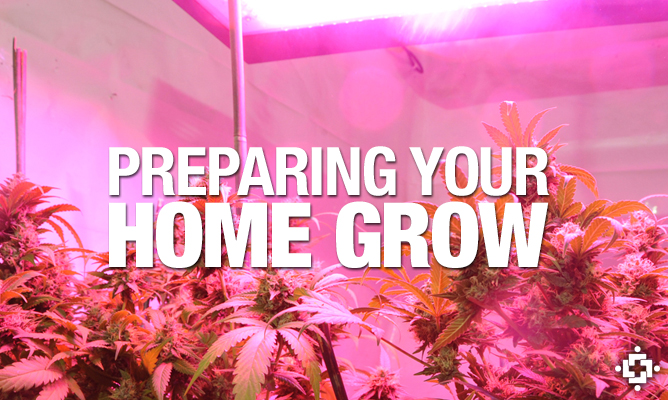
Things To Consider When Preparing Your Home Grow
For some licensed medical marijuana production facilities, it just may not be feasible or economically viable to produce certain varieties, assuming the facility even has access to the genetics. So, patients who have very particular requirements that may otherwise not be adequately satisfied from their local supplier often decide to grow their own. The same can be said of patients who are after the therapeutic benefits of THC-A and therefore require fresh material for juicing.
“Through this series of installments here at Medical Jane, we are going to break the cultivation process down into its parts.”
Just as there are those who brew their own beer, even though it may be easier to buy at the store there is likely always going to be a segment of recreational tokers and medicinal marijuana patients alike who will say “nothing beats their home grown”. And while the technology to grow crops indoors has gotten more user friendly, widespread and affordable, the information to do so has often become more confusing, and profit-driven than ever before.
Through this series of installments here at Medical Jane, we are going to break the cultivation process down into it’s parts, segment by segment, so that any aspiring home-cultivator will have the proper fundamentals for important things like variety selection, drying and curing to ensure they have the right tools in their proverbial box for a lifetime of learning and growing.

How To Choose Where To Set Up Your Home Grow
First, you need to determine if your location is suitable or learn what you need to know in finding a good location to grow crops of medicinal buds.
While knowing and researching the law is up to you, there are some relatively universals things to keep in mind. Here are some key points to remember when deciding if your spot is right, or what you’ll need to look for in a location more suitable for growing:
- Make sure that access to electricity, water and possibly ventilation, is ample and safe relative to your demand based on harvest needs or goals. You don’t want the expense or hassle of lots of wiring, plumbing, etc.
- Be considerate of the safety of others. If you have big cropping ideas, look into industrial zones, away from residential areas (for the safety of others, and even your own).
- It’s better not to choose a location that’s been known for cultivation. This is simply and invitation for problems, from everything to latent insect problems to two legged pests that have no regard for you, your safety or security. Be smart, be safe.
- While renovations can be made in just about any situation, it’s always better to avoid having to make a lot of modifications to an existing room or building. Basements or empty warehouse spaces are typically your best bet. For micro-production, a closet with a mini tent is still an option, with a few considerations that we can talk about later.
- Is there going to be ample ceiling height? Think about the size of your plants at harvest, and container or support system, the crop lighting overhead and safe distances from ceilings. Eight feet of overhead runs out fast when growing indoors, especially with larger plants to keep plant counts reasonable.
- How secure is the area or building? Are there a lot of windows for people to see in, or for bright light to shine out of that will need to be covered? Are the doors of secure construction with solid locks? Blending in with your surroundings is a good strategy for most; if you make the average place look like Fort Knox compared to surrounding buildings or homes you are likely to draw attention. On the other hand, cameras and secure doors are not uncommon in most areas that typically necessitate their need. Use your discretion in this regard.
- If you like to party late into the night, it’s probably better that you don’t grow there. This can be an open door to all kinds of trouble.
- Even though home cultivation may be legal where you live, it’s better not to announce what you are doing to everyone you know. It may be tempting to tell people about what a cool gardener you have become, but that old adage never goes out of style: “Loose lips sink ships”. For that matter, so do disgruntled exes, business associations, etc. that could cause issues if they know you cultivate your own medicine.

Society has come a long way over the last decade in the acceptance of medicinal marijuana, but there’s still a long way to go. While it may be perfectly alright to grow your own-and even beyond, an ounce of caution is still worth oodles more than a pound of cure.
And you can take that to the bank…. the seed bank that is, as next time we are going to be taking a look at variety selection.
Erik Biksa has been writing about and discussing hydroponics growing, related technologies and cropping methods since 1999 in a variety of professional publications and platforms globally Erik has travelled the world learning and teaching modern …
